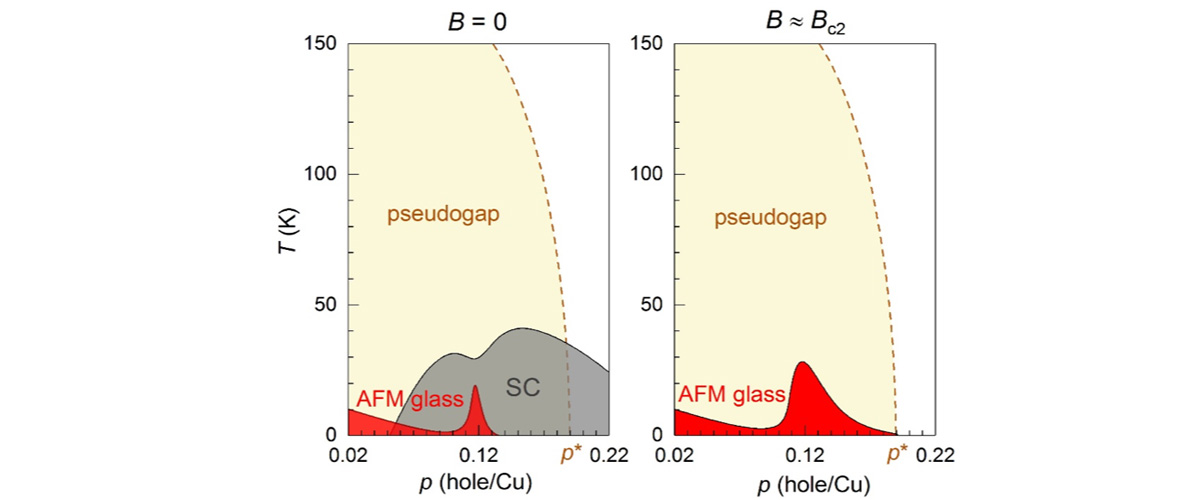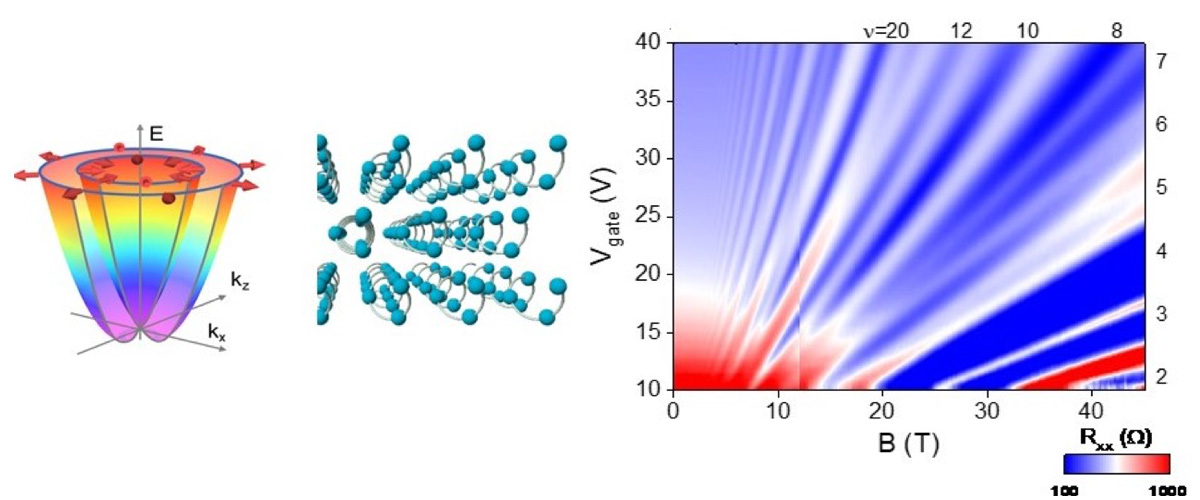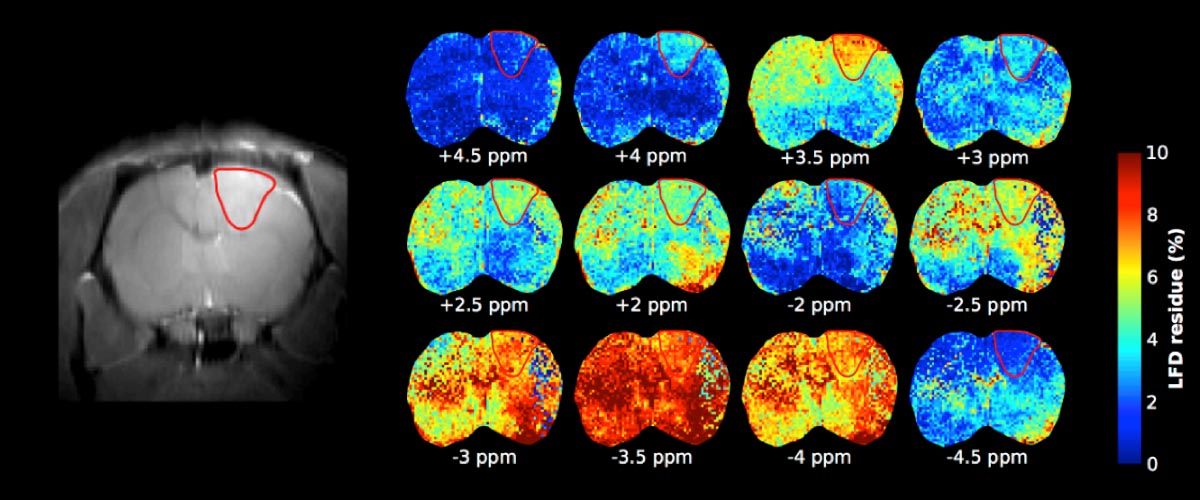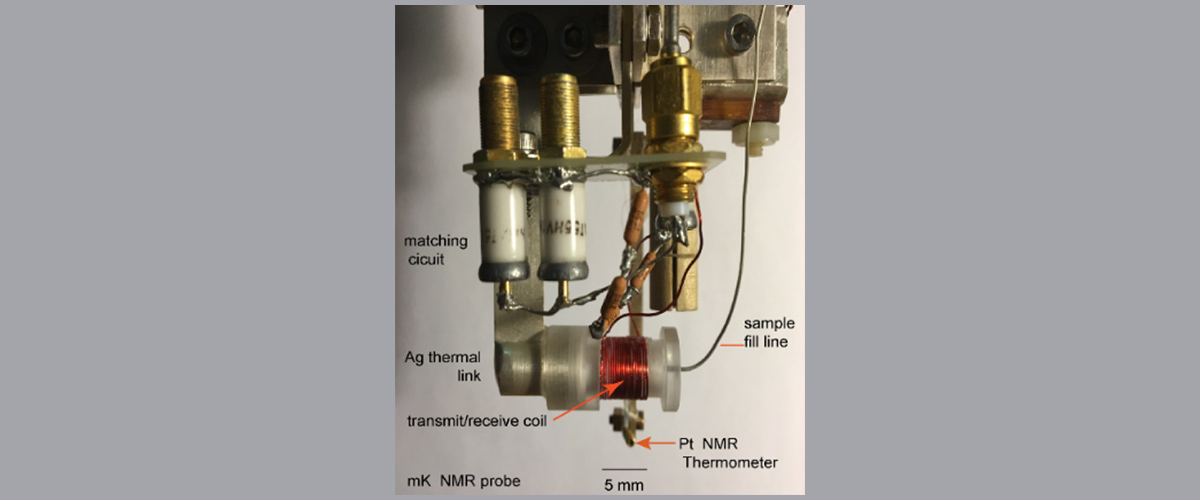What did scientists discover?
The cuprates are a family of layered copper oxides that show superconductivity at high temperatures. This research on a particular cuprate (La2-pSrpCuO4) shows that a connection exists between a particular form of magnetism (the so-called "antiferromagnetic glass" phase shown in Fig. 1) and the “pseudogap,” an emblematic phenomenon of the cuprates. These high-field experiments show something fundamental about the pseudogap: despite being a metal, its magnetic properties are less like a normal metal and much closer to those of an insulator with strongly repelling electrons.
This work also concludes that other high-field measurements in La2-pSrpCuO4 near the pseudogap edge at p*~0.19 might be influenced by this glassy magnetism.
Why is this important?
Understanding the pseudogap state is thought to be key to understanding cuprate superconductivity, which may be a crucial step toward the realization of room-temperature superconducting applications.
Who did the research?
M. Frachet1*, I. Vinograd1*, R. Zhou1, S. Benhabib1, S. Wu1, H. Mayaffre1, S. Krämer1, S. K. Ramakrishna2, A. P. Reyes2, C. Proust1, D. LeBoeuf1, M.-H. Julien1
1Laboratoire National des Champs Magnétiques Intenses, Grenoble & Toulouse, France; 2National MagLab
Why did they need the MagLab?
Superconductivity actually hinders the development of magnetism. The MagLab's unique 45T hybrid magnet was instrumental for the nuclear magnetic resonance (NMR) experiments, since fields of ~40T proved necessary to both quench superconductivity and detect the concomitant upsurge of magnetism at low temperatures. To reach the conclusions of this study, this group used two complementary techniques (NMR & sound velocity) and three different high-field facilities, the DC magnets in Grenoble and Tallahassee and the pulsed magnets in Toulouse. The MagLab’s 45T hybrid was utilized for the NMR measurements between 20T and 45T.
Details for scientists
- View or download the expert-level Science Highlight, High magnetic fields reveal hidden magnetism in a cuprate superconductor
- Read the full-length publication, Hidden magnetism at the pseudogap critical point of a cuprate superconductor, in Nature Physics
Funding
This research was funded by the following grants: Funding Grants: C. Proust, D. LeBoeuf, M.-H. Julien (ANR); R. Zhou (NNSFC, CAS); G.S. Boebinger (NSF DMR-1644779)
For more information, contact Tim Murphy.






